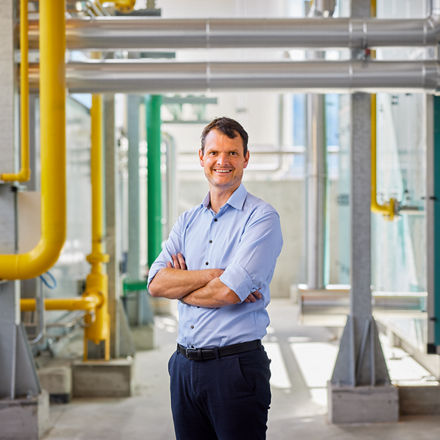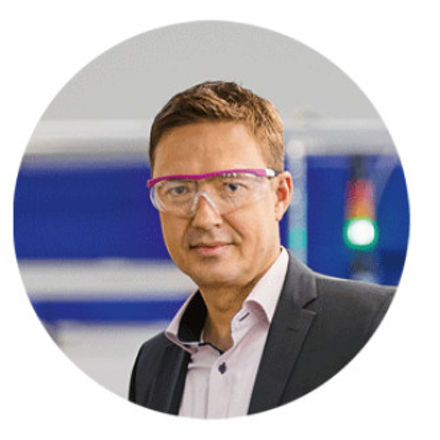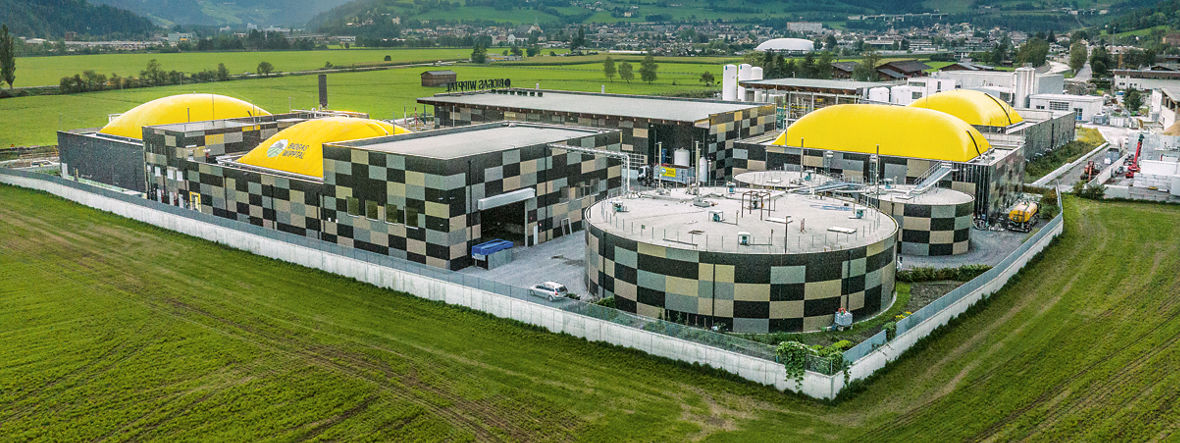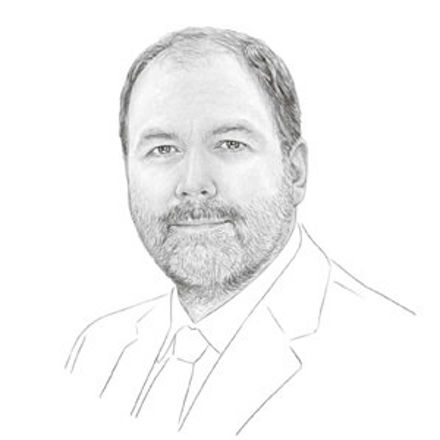The Mayr family’s farm lies picturesquely on the outskirts of Pfitsch, a small town in the Wipp Valley (Wipptal) in the South Tyrol region. To the south you can see lush green meadows and cornfields; to the north is Höllenkragen Mountain, which is 1,600 meters high. Right behind the main farmhouse with its traditional wooden balcony, curious little calves look through a stall door. A barely perceptible whiff of cows hovers over the scenery.
It’s hard to believe that no fewer than 300 cows are standing in the four stables of the Mayr farm. Each of them, when full-grown, can produce not only 32 liters of milk daily but also about 50 liters of slurry and four kilograms of manure. At the moment, Patrick Mayr and his children are feeding the cows with corn silage. The stables are roomy with high roofs, and scrupulously clean. But the Mayr farmyard does not have a correspondingly huge dunghill or a gigantic pit of slurry. The cows’ droppings are picked up from the farm on a regular basis.
The huge amounts of animal waste that are generated pose a huge challenge to the farms in this idyllic mountain world. “We used to deliver manure and slurry to the fruit and wine growers, but they could only use the manure in the fall and the slurry in the spring,” says Mayr. Besides, increasingly strict European Union regulations set certain limits, because too much slurry on too small an area of land poses a threat to the groundwater. The farmers face a choice: either keeping fewer cows or finding a solution for the disposal of their cow droppings.
BIOFUEL FOR TRUCKS
In the Wipp Valley, gray semitrailers and ocher-yellow tank trucks drive from farm to farm. They collect manure and slurry and take it to a brand-new facility in Pfitsch that uses Sepuran® Green, a high-performance membrane from Evonik, to produce carbon dioxide (CO2) and biomethane (CH4). Before the plant gates stands a pump where the vehicles of the cooperative’s members can refuel with liquid biomethane (bio-LNG, or liquefied natural gas). Each of the big tanks holds 400 liters. “We’ve calculated that this amount of bio-LNG is roughly equal to the manure and slurry produced by one cow over a year,” says Manfred Gius, the CEO of Biogas Wipptal.
In Pfitsch, the local farmers are demonstrating how many of the problems of modern agriculture can be solved simultaneously. The demands for action are being intensified by the overfertilization of the fields and the neighbors’ complaints about the smell of the slurry—but that’s not all. The methane contained in the slurry and the manure is an especially damaging greenhouse gas. Admittedly, the proportion of CH4 in anthropogenic greenhouse gas emissions is only about three percent, but methane is responsible for 0.5°C of the global warming that has taken place so far, which totals approximately 1.1°C. The largest proportion of worldwide methane emissions is due to human activities. Three sectors are especially serious sources: agriculture is responsible for about 40 percent of the total, the energy industry for about 37 percent, and the waste management industry for about 19 percent.
If the biogas produced by all of these sectors were systematically processed, it could replace a large proportion of natural gas production—and generate lots of other useful materials. Dr. Götz Baumgarten, who played a major role in the development of Sepuran® membranes at Evonik, is seeing growing worldwide interest in the production of biogas. “At the moment, North America is intensely active in areas focusing on waste materials,” he says. “But the regions along the equator also have a lot of potential, because of the fast growth of their local vegetation.”

WHERE SHOULD THE WASTE GO?
The plant in the South Tyrol demonstrates on a small scale how biogas can be utilized efficiently. The membrane it uses separates out biomethane in a concentration of about 97 percent. The CO2 contained in biogas is actually so pure after treatment that it can be used in food production—for example, as the carbonic acid in beverages. At the same time, the dairy farmers are reducing their farms’ pollution of the atmosphere by 30 to 40 percent.

By using the treatment plant, the region’s farmers are not only preserving the earth’s climate but also safeguarding their own livelihood. For a large number of these farmers, many of whom also have another job, reducing their livestock or paying for waste removal would have meant economic ruin. That’s why in 2008 they came up with the idea of using the manure to produce biogas for generating electricity. More than 40 farmers backed this concept. But not all of the valley’s inhabitants were thrilled by it. People worried that the plant might produce bad odors or that meadows would be repurposed for raising energy crops. It took eight years before the biogas plant’s site was ready for construction and all the permits were on the table. However, the price of a kilowatt-hour of electricity had decreased so much since the project was launched that the whole enterprise was no longer worthwhile.
But in 2018 the Italian government passed a law to promote biomethane for heavy-duty transportation—and the farmers in the South Tyrol switched their plans from electricity to fuel. They found the technology they needed for their production about 250 kilometers northeast of Pfitsch in the town of Schörfling am Attersee in Austria. This is where Evonik has since 2011 produced high-performance membranes that convert biogas into ultrapure biomethane and natural carbon dioxide.
The membranes, which are sold under the product name of Sepuran®, look like macaroni with regard to their shape and color. In recent years the company’s solutions for biogas have been followed by modules that can separate out hydrogen, helium, nitrogen or oxygen. The tiny tubes made of high performance polymers are packed and fixed by the thousands in stainless steel pipes. The biogas is precleaned and then forced through these modules. Because their molecules have different sizes, carbon dioxide and water vapor escape sideways through the membrane, whereas the methane reaches the other end of the membrane in high purity. “Our membranes have proved to be very robust,“ says Baumgarten, the expert from Evonik. “Even the first plants are still running without any problems.”
However, he adds, huge progress has been made in terms of capacity and efficiency in the past eleven years. Sepuran® Green membranes were originally designed for smaller amounts of material. Today they are also used in large biogas plants that are being constructed all over the world by a network of partner companies. Baumgarten reckons that the membranes will last for the entire lifetime of a biogas plant. “We’re doing practically zero replacement business,” he says.
In Pfitsch, the farmers recruited potential buyers of the methane produced at their plant as investors: the logistics companies Fercam and TransBozen as well as the local authorized dealer of the truck producer Iveco, all of which use the liquid form of the gas as fuel for their trucks. The companies became shareholders and financial backers of the new design of the plant, which is managed by Manfred Gius. As an engineer, Gius had previously headed pipeline and gas plant construction projects in several countries. Besides, he’s a South Tyrol native. “I know quite a bit about gas plant construction,” says Gius, who is now the company’s CEO. “But as far as I know, this concept is unique, at least in Europe.” He’s referring to the fact that the South Tyrolean farmers wanted not only to produce biomethane and bio-CO2 but also to utilize manure and slurry down to the last crumb and drop in ways that make environmental and economic sense. By now, 60 farmers hold shares in Biogas Wipptal and 130 farmers are sending their manure and slurry there to be processed.


BACTERIA DO THE WORK
The manure that is brought in trucks from the farms to the plant initially lands in a storage bunker that holds 1,200 cubic meters. There it is chopped up in a fully automatic process, liquefied with slurry, and pumped into fermenters, where a natural bacterial strain anaerobically breaks down the organic digestive waste, thus producing biomethane. The four pre- and post-fermenters with their striking yellow domes have a total capacity of 32,000 cubic meters.
The manure rots for 30 days in the pre-fermenters, emitting about 85 percent of the biomethane in the process. During the next 30 days the remaining 15 percent is emitted in the post-fermenters. Reverse osmosis is used to extract the water from most of the slurry in the fermentation residue. This process was developed by a US company. A vibrating membrane prevents the system from clogging. Through this method, 50,000 cubic meters of pure water of drinking-water quality is recovered annually and channeled into the Pfitscherbach stream that runs past the plant complex.

»The manure and slurry produced by one cow in a year is enough for one tank of bio-LNG«
MANFRED GIUS CEO OF BIOGAS WIPPTAL
Part of the residue from the fermenters, together with its residual moisture, is sold to fruit and vegetable farmers, who use it specifically for the growth phases of their plants. Because this fertilizer does not soak away as rapidly as slurry, it can be applied in smaller amounts and does not pose as great a problem for the groundwater. The rest of the residue is dried, pressed into odorless pellets, packed into recyclable paper bags, and marketed as long-term fertilizer. The farmers who bring their manure to the plant receive the fertilizer free of charge.
“The travel agents and hotel owners are thrilled that the smell of manure and slurry is no longer wafting over the meadows,” says Gius. The biomethane is liquefied at a temperature of -150°C and stored under continuous quality control in three cylindrical white tanks at the edge of the plant complex. The participating companies can either fill up their trucks’ tanks directly from a fuel pump or take away the biomethane via trucks with trailers and sell it.
WORLDWIDE INTEREST
Italy is, after Germany, the second-biggest biogas market in the European Union. Demand has also increased significantly in countries such as France and Denmark. Most of these countries use biogas to produce electricity and heat, which are either used decentrally or fed into distribution networks. However, the production of biomethane as a fuel, for the heating market, and as a basic chemical product is growing in importance—largely because of the steep increase in the price of natural gas. In 2021 processed biogas already accounted for 25 percent of Denmark’s domestic gas supply. The Danish government aims to use biomethane primarily in industry, for energy production, and as a basic chemical feedstock. For example, the biogas plant that has operated on the island of Funen since 2020 uses Evonik’s Sepuran® Green membranes to produce biomethane from silage, manure, and slurry.
Recently there has been a commitment to biogas in the USA as well. The Inflation Reduction Act (IRA) that was passed by Congress in mid-2022 includes a climate protection package amounting to $369 million. Its aim is to reduce greenhouse gas emissions by 40 percent by 2030. Meanwhile, in the USA, biogas has been legally recognized as a renewable energy source in the same category as wind and solar power. Many companies with large vehicle fleets, such as the online mail-order firm Amazon, the logistics services provider UPS, and the Walmart retail chain, are taking advantage of this law and planning to use biomethane to make their CO2 footprint a few sizes smaller.
California grants tax breaks to fuels that fulfill the “low carbon fuel standard,” no matter in which US state the biomethane was fed into the grid. Fair Oaks Farms in Indiana is one of the big biogas producers in the USA. Here milk is produced, as on the farms in the South Tyrol but on a completely different scale. Approximately 35,000 dairy cows are kept here in several facilities. Here too, Sepuran® Green membranes are used for processing biogas.

LANDFILL WASTE AS AN ENERGY SOURCE
In addition to substrates from agriculture, trash is increasingly becoming a focus of the biogas industry in the USA. In Europe, trash has been separated for decades and residual waste has been combusted as a rule, but in the USA landfills are still common. And as the trash rots inside them, vast amounts of methane are formed. For several years now, the city of Dubuque in Iowa has been using methane from its landfill to provide heating for a total of 2,700 households. This energy source has tremendous potential, explains Martin Reiser from the Institute for Sanitary Engineering, Water Quality and Solid Waste Management at the University of Stuttgart. “About 150 to 200 cubic meters of landfill gas are formed by every ton of unseparated household trash,” he says.
“And about 60 percent of this gas is methane.” The fifth gas processing plant equipped with Sepuran® Green membranes went into operation in Dubuque over a year ago. Partly thanks to its use of biogas, the city has reduced its greenhouse gas emissions by two thirds since 2016. If other municipalities were to follow this example, the effect on the earth’s atmosphere would be tremendous. Researchers at the SRON Netherlands Institute for Space Research discovered on the basis of new satellite data that landfills release even more methane than was previously assumed. They analyzed large landfills in Buenos Aires, Argentina; Delhi and Mumbai in India; and Lahore, Pakistan. The data showed that these cities produce between 1.4 and 2.6 times more greenhouse gas than suggested by previous data sets, and that landfills are the source of up to 50 percent of these emissions.

FIZZY DRINKS FROM BIOGAS
According to the German trade association Biogas, there is still unused potential in the processing and utilization of biogas. For example, biomethane and bio-CO2 as well as other byproducts are used to generate electricity in many plants—and the carbon dioxide substantially reduces their efficiency. Sepuran® Green membranes make it possible to separate the CO2 and utilize it separately from biomethane. Natural CO2 is in great demand as a raw material, for example as carbonic acid in the beverage industry, as well as for food packaging and as a growth accelerator in greenhouses.
In the town of Güstrow in Germany, a biogas plant is now being converted so that it can separate bio-CO2 and liquefy it for further transport. The plant had been producing biomethane and feeding it into the 25-bar natural gas network since 2009. The 400,000 tons of substrate that the plant used annually consisted mainly of corn but also of whole-plant silage, grains, and grass silage. It produced more biomethane than any other plant in Germany. The construction company EnviTec Biogas acquired the plant in April 2021 and repurposed it.

»Our membranes have proved to be very robust«
GÖTZ BAUMGARTEN HEAD OF MEMBRANE DEVELOPMENT AT EVONIK
The new operating model calls for reducing the input to 150,000 tons of substrate per year, but to mainly utilize agricultural residue. In the future, Sepuran® Green modules will be used in northeastern Germany, as in the South Tyrol, to produce bio-LNG as well as liquid CO2. Hannes Baumgartner, the managing director of the logistics company Fercam, which holds shares in Biogas Wipptal, says that liquid biomethane is the ideal fuel for trucks. “When it’s combusted, it produces significantly less pollutants and CO2 than diesel. The use of bio-LNG will enable us to work almost CO2-neutrally in the future,” he explains. According to Baumgartner, liquid gas is especially suitable for heavy-duty transportation over long distances because the gas vaporizes as it gets hotter. He adds that compressed gaseous biomethane has proved to be more suitable for shorter trips that involve many stops.
GROWING INTEREST
For the bio-LNG producers in the Wipp valley, selling is no problem. The shareholders use part of the fuel themselves. As for the rest, they are currently getting the best prices in Germany, because companies that use bio-LNG don’t need to buy CO2 certificates. Evonik is also increasingly relying on bio-LNG, which it buys from Shell. This multinational energy company is currently investing in a biogas plant in the Rhineland that is expected to produce 100,000 tons of liquid gas per year.
The production plant for Sepuran® modules in Schörfling already obtains all of its energy from biomethane. There is also potential for growth in the South Tyrol region. “We are a small company with only five employees,” says Gius, the CEO of Wipptal Biogas. “But in South Tyrol alone, theoretically nine more plants of this size could be operated using only manure and slurry.” Also, he says, there is still plenty of organic waste that could be used in addition to agricultural waste. “In any case, we don’t have to fall back on energy plants,” he concludes.


